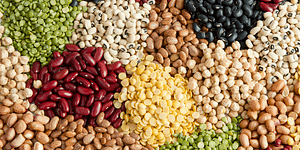Moths: Nighttime’s Kaleidoscope

While butterflies may take all of the attention during the day time, moths are the celebrities of night. There are over 2,500 species of moths in Britain alone, yet they are often ignored. Author Chris Salisbury is trying to change that.
The following is an excerpt from Wild Nights Out by Chris Salisbury. It has been adapted for the web.
(All illustrations copyright Stewart Edmondson.)
About Moths
If butterflies are guilty of grabbing the limelight by day, then moths need a better PR agent to gain them more positive reviews. Let’s start with the sheer numbers. There are 59 species of butterfly in Britain, which sounds a lot, but it pales into insignificance against the 2,500 species of moths that we enjoy on these enchanted islands.

Moths have been ascribed the most delicious names. Call them out loud and it has the feeling of some bardic poetic incantation:
Autumn green carpet, ruddy highflyer, Canary-shouldered thorn,
Coxcomb prominent, dark dagger, dingy mocha, Flounced chestnut, peach blossom, Pale-brindled beauty, angle shades
There are excellent field guides to moths as well as smartphone apps for moth identification. To single out a few of our more charismatic species here, I will start with Britain’s biggest, just because there is a tendency to veer towards extremes, and when things are generally small, size matters.
Clifden nonpareil. It has been bouncing back from UK extinction and can now be seen in southern England. Its impressive wingspan can reach 9.5cm (3.7 inches) and it bears a bright blue stripe across its black hind wings.
Hawk moths. These superbly patterned moths have muscular, heavy bodies. The elephant hawk-moth is lime green and sugar pink, and is so named because its caterpillar stage resembles an elephant’s trunk.
Scarlet tiger moths. Some moths are also active during the daytime, and scarlet tigers are amongst that group. They draw attention by dramatically flashing their under wings as a warning to predators that they might not taste good. They also have caterpillars of distinction, being covered with protective, irritant hairs – the reason we call them ‘woolly bears’ and the reason the only birds to find them palatable are cuckoos.
Emperor moths. The distinctive set of four large eye-spots on the wings of emperor moths are not just eye-catching, but function to deter hungry birds. They also have impressive scent-catching equipment to detect the presence of females from 100 metres (328 feet) away. You can buy pheromone lures to attract this spectacular species.
Chinese character. This white moth qualifies for this selective list by having brown blotches, which helps it escape predation by impersonating a bird dropping.
Red sword-grass. With a head that looks like a shaven pencil, the red sword-grass moth could be confused with a broken-off birch twig.
There are also some species that evade capture by the voracious bats who zone in on moths using echolocation. Some tiger moths for example have evolved a sonar-blocking capacity to mask their whereabouts and to confuse the bats.
Overall, there is much to celebrate in shining a light on moths, with the only caveat to that being the general decline in numbers, of most concern being the alarming 40 per cent decrease in the south of the UK. It’s an increasingly familiar story.
It’s ‘coming to light’ that moths play a part in plant pollination. Recent investigation suggests they may play just as important a part in this crucial process as bees. Good news for moths, and all of us too, and it’s bound to help them climb the priority species list for biodiversity issues.
 Moth Trapping
Moth Trapping
Equipment required:
- Moth trap or white/light-coloured sheet
- Rope or cord
- Torch
Ages: 8 and up
Number of participants: 2–25
Moths are one of the more reliable species to encounter at night, and if you have the time and wherewithal, investing in a moth-trapping experience is a classic way to engender awe and wonder at what the natural world manifests at night.
There’s something so intriguing about the appearance of what is normally hidden from view, and Britain’s great diversity of moth species is one of our best-kept secrets.
High summer is the most productive time of the year for trapping moths. A simple construction of a container and a light to lure them is really all it takes. Set it up just before dusk and then the thrill of discovery follows – ideally the next morning. The moths are less active in the light of day and can be handled and observed more easily.
There are several types of commercially produced moth traps, as described in the Moth Traps section on page 39.
If you don’t have a ‘proper’ moth trap, then improvise by stringing a rope or cord between two trees, hanging a white or light-coloured sheet over the line, and illuminating the sheet from behind with a lantern or torch. This creates a blank viewing canvas that will definitely attract moths.
At home you can even attract night-flying insects by leaving a light on in one room, the windows and curtains open to see what has come visiting. For closer observation you could carefully put one in a jam jar, which it won’t mind for a short while. At least it’s safe from bats in there.
And in case you were wondering, no one really knows why moths are so attracted by light. It’s more presumed than proved that they use the moon’s light to navigate and alternative theories abound but remain speculative. One I like is from a scientist called Philip S. Callahan who put forward his theory in the 1970s to explain why moths were lured into flames. The gist of it was that the male moths were fooled by the light frequencies produced by candle flames, confusing them for the bioluminescent responses triggered by female moths’ pheromones. In other words, this was an attempt to mate with the fire, a prospect that is always only going to end one way. It’s no longer a theory to take too seriously, but don’t you just love the mythotragic quality of this idea? Long live the mysteries of the night!
Recommended Reads
Recent Articles
Oxeye daisies are one of the most important plants for pollinators including beetles, ants, and moths that use oxeye daisies as a source of pollen and nectar. Instead of thinking about removing a plant like oxeye daisy, consider how you can improve the fertility and diversity of habitat resources in your home landscape, garden, or…
Read MoreThis long-lived perennial legume is used for forage and erosion control. Kudzu is edible with many medicinal uses and other applications. Pollinators of all kinds love its prodigious lavender blooms!
Read MoreMove aside, maple! We have two new syrups to add to the table. Read on for insights on tapping, selling, and eating syrup from walnut & birch trees.
Read MoreWhy is modern wheat making us sick? That’s the question posed by author Eli Rogosa in Restoring Heritage Grains. Wheat is the most widely grown crop on our planet, yet industrial breeders have transformed this ancient staff of life into a commodity of yield and profit—witness the increase in gluten intolerance and ‘wheat belly’. Modern…
Read MoreDid you ever wonder how leeks, kale, asparagus, beans, squash, and corn have ended up on our plates? Well, so did Adam Alexander, otherwise known as The Seed Detective. The following is an excerpt from the The Seed Detective by Adam Alexander. It has been adapted for the web. My Seed-Detective Mission Crammed into two…
Read More









